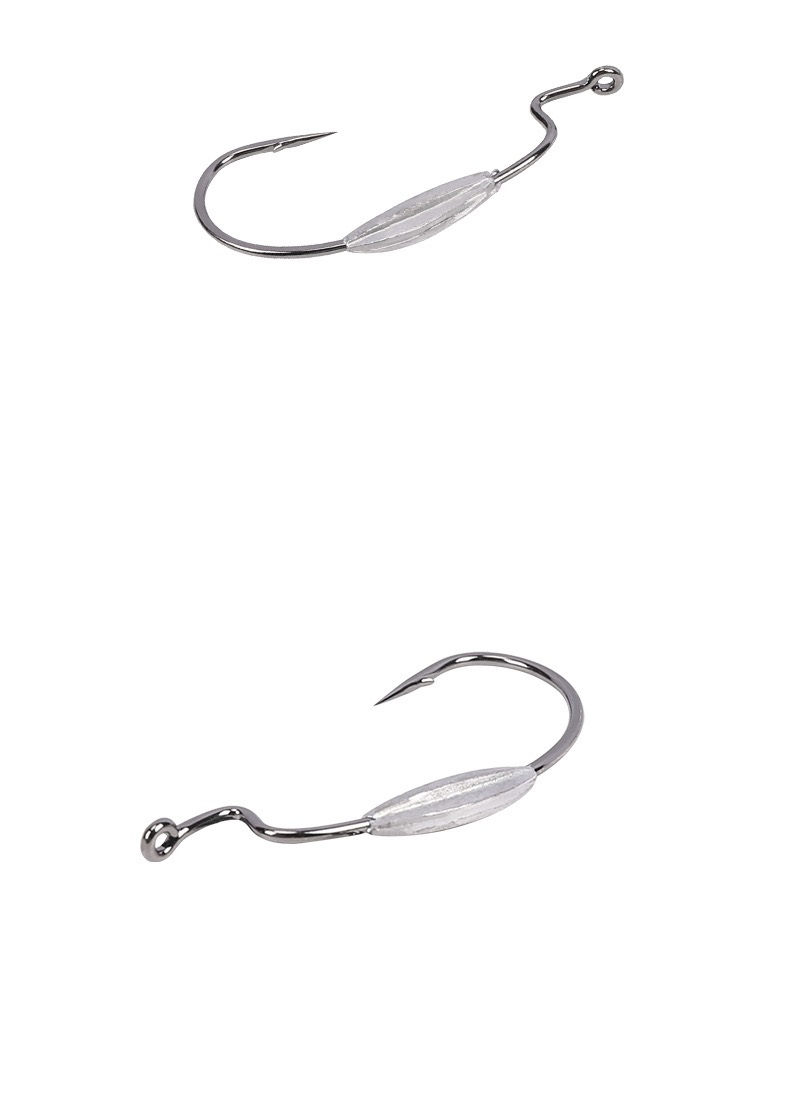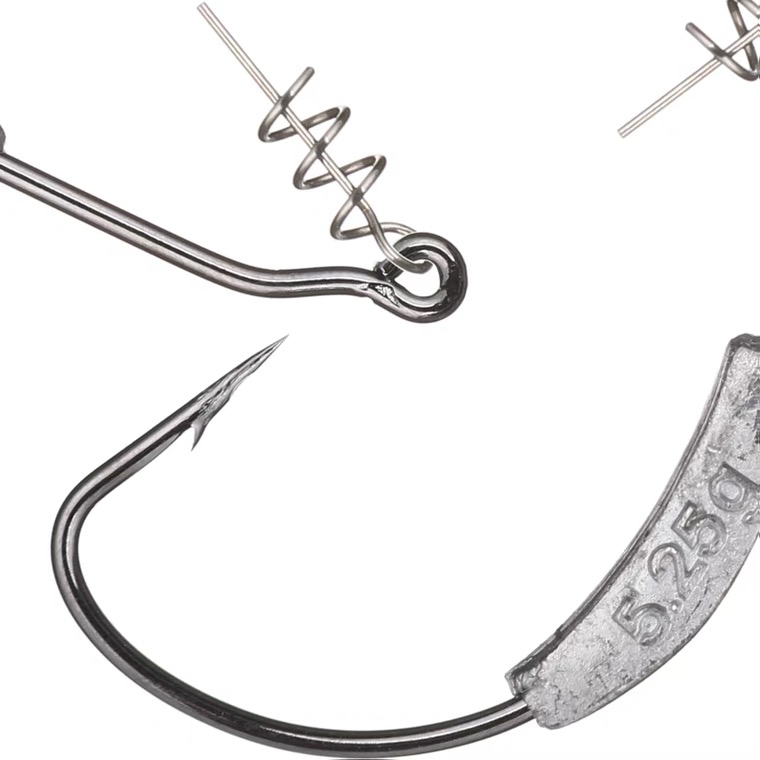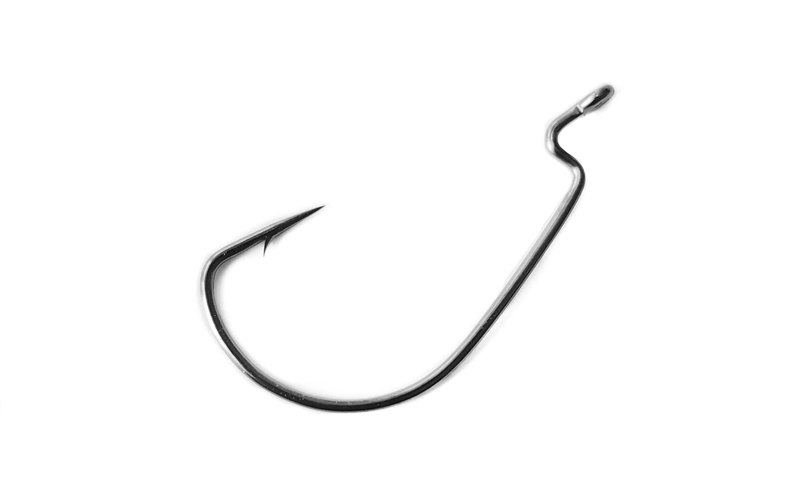Fishing for striped bass in weedy environments demands specialized gear to navigate dense vegetation while ensuring reliable hookups. Among the most effective tools for this challenge are offset worm hooks, which combine weedless design with strong penetration. This guide explores why these hooks excel in such conditions, how to choose the right one, and tips for maximizing success while prioritizing fish conservation.
Why Offset Worm Hooks Shine in Weedy Waters
Offset worm hooks feature a distinctive Lshaped bend near the eye, allowing soft plastics like worms, craws, or creature baits to be rigged weedlessly. This design minimizes snags while keeping the hook point tucked securely into the bait, making them ideal for targeting striped bass lurking in submerged grass, lily pads, or timber.

Their wide gap ensures ample space between the hook shank and point, enabling deeper penetration even when bass strike aggressively. This is critical for striped bass, which often ambush prey in thick cover, requiring hooks that can withstand sudden, powerful runs.
Key Features to Look for in Offset Worm Hooks
1. Hook Gap and Shank Length
A wider gap accommodates bulkier soft plastics, ensuring the hook point remains exposed enough to secure a solid hookset. Longer shanks provide better leverage when pulling fish out of dense vegetation, while shorter shanks suit finesse presentations.
2. Wire Thickness
Thicker wire resists bending under the strain of large striped bass but requires heavier rods and lines to drive the hook effectively. For lighter setups, opt for medium or lightwire hooks to balance strength and flexibility.
3. Barb Design
Barbs near the hook eye prevent soft plastics from sliding down the shank during casts or retrieves. This feature is especially useful when fishing Texasrigged baits in heavy cover, maintaining bait integrity and presentation.
Selecting the Right Size for Striped Bass
Striped bass often exceed 20 pounds, so hook size must align with both the bait and the target fish:
Smaller baits (4–6 inch worms): Use 2/0 to 3/0 hooks to avoid overwhelming the bait’s action.
Larger baits (7+ inch creatures or swimbaits): Opt for 4/0 to 5/0 hooks to ensure sufficient gap and holding power.

Testing different sizes in varying weed densities helps identify the optimal balance between stealth and hooking efficiency. For example, dense hydrilla may require downsizing to reduce snagging, while open pockets allow larger hooks for better retention.
Techniques for Fishing Offset Hooks in Weeds
1. Texas Rigging
The classic weedless rig involves threading the hook into the bait’s head, rotating it 180 degrees, and burying the point into the body. This setup glides through vegetation while keeping the hook protected until a strike occurs. Pair with a bullet weight pegged close to the hook for punching through thick mats.
2. Pitching and Flipping
Accurate casts to isolated weed edges or pockets are crucial. Use a heavy rod to drive the hook through the bass’s bony mouth and quickly steer fish away from snags. A highspeed reel aids in recovering line before the fish reaches tangled cover.
3. Retrieve Adjustments
Vary between slow drags and sharp pops to mimic injured prey. In sparse weeds, a steady retrieve with occasional pauses works well, while dense areas may require “hopping” the bait to avoid fouling.
Conservation Considerations
Offset worm hooks reduce guthooking compared to traditional Jhooks, but proper handling remains vital for striped bass survival:
Avoid excessive fight times to minimize stress.
Use rubberized nets to protect the fish’s slime coat.
Crush barbs for easier hook removal, especially in catchandrelease scenarios.

Maintenance and Durability
Saltwater exposure and abrasive weeds can degrade hooks over time. Rinse them with freshwater after each trip and inspect for rust or dull points. Replacing hooks after landing several large fish ensures reliability, as even premium models can weaken under repeated strain.
Conclusion
Offset worm hooks are indispensable for targeting striped bass in weedy habitats, offering a blend of weed resistance, strength, and versatility. By selecting the right size, pairing with appropriate gear, and refining retrieval techniques, anglers can consistently land trophysized fish while preserving their fragile ecosystems.
For those new to this style, start with mediumwire hooks in 3/0 or 4/0 sizes and practice Texasrigging in moderate cover. As confidence grows, experiment with larger baits and heavier setups to conquer the thickest weed beds. Remember, the health of the fishery depends on mindful practices—every released fish contributes to future success.